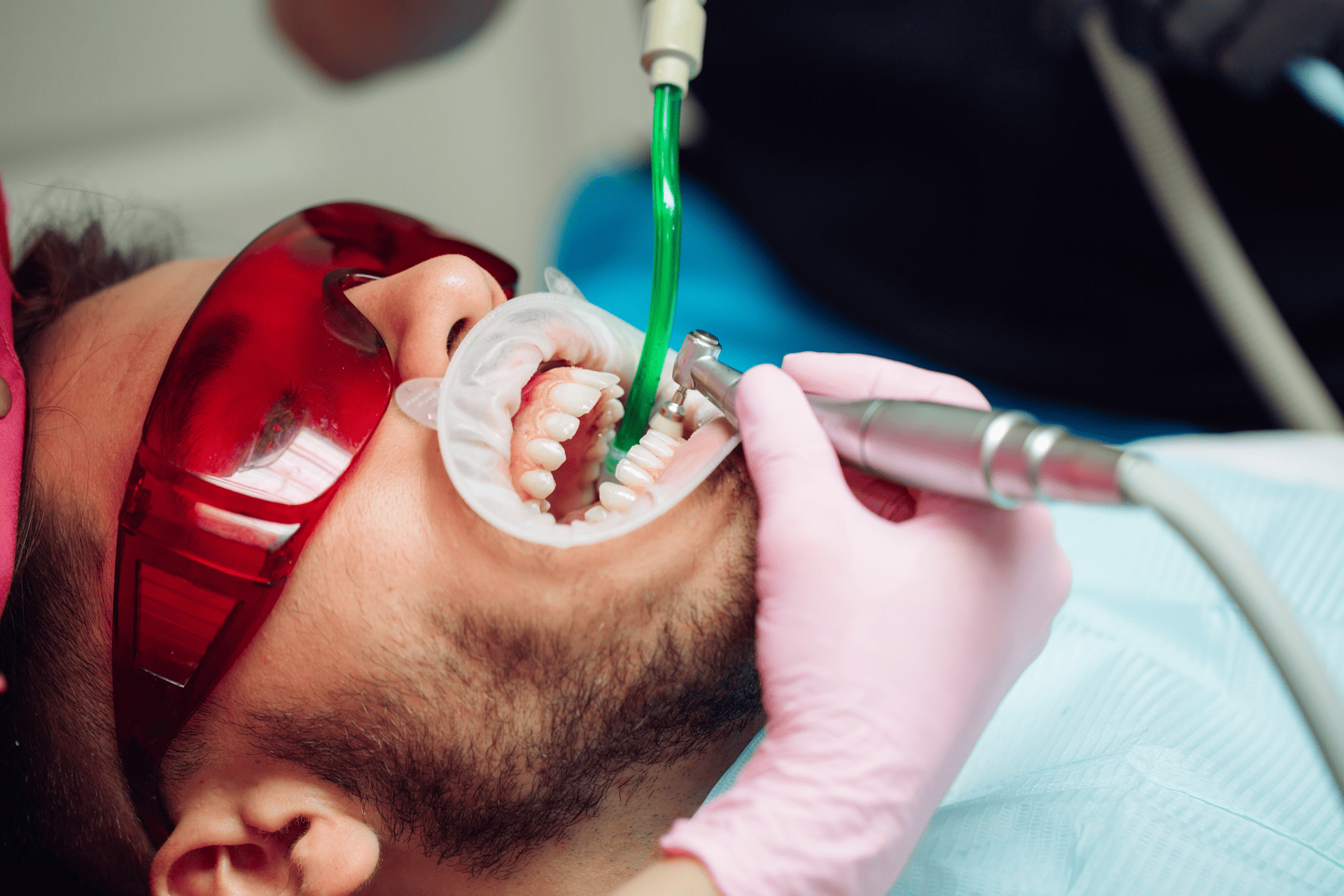Why Are My Teeth Sensitive After Fillings?

Having a dental filling can sometimes lead to an unexpected and uncomfortable side effect: tooth sensitivity. This article explores the reasons why teeth might become sensitive after fillings, the common causes of this sensitivity, and the various ways it can be managed and reduced. It also provides guidance on when to seek further dental advice and how to prevent sensitivity after future dental work. Understanding the intricacies of tooth anatomy, the impact of different filling materials, and the importance of proper dental care can help alleviate concerns and improve dental health.
Key Takeaways
- Tooth sensitivity after fillings can be attributed to several factors including the tooth's anatomy, the type of filling material used, and the technique of the filling procedure.
- Common causes of post-filling sensitivity include the expansion and contraction of filling materials, improper filling technique, and possible allergic reactions to the materials.
- Managing tooth sensitivity can involve home remedies, professional treatments, and long-term care practices to ensure the health of filled teeth.
- It is important to distinguish between normal post-filling sensitivity and symptoms that may indicate infection or other complications, which require prompt dental advice.
- Preventive measures such as choosing the right filling material, employing techniques to minimize sensitivity, and maintaining oral hygiene can reduce the risk of sensitivity after future dental work.
Understanding Tooth Sensitivity After Fillings
The Anatomy of a Tooth
To understand why teeth may become sensitive after fillings, it's essential to grasp the basic anatomy of a tooth. Teeth are composed of several layers, each with a specific function:
- The outermost layer is the enamel, which is the hard, protective surface.
- Beneath the enamel lies the dentin, a less dense layer that contains microscopic tubules leading to the nerve center of the tooth.
- The innermost part is the pulp, where the tooth's nerves and blood vessels reside.
When a dentist performs a filling, the goal is to restore the tooth's integrity by replacing the decayed portion. However, this process can inadvertently expose the dentin or disturb the pulp, leading to increased sensitivity. This is because the nerves within the pulp can react to changes in temperature, pressure, or the presence of foreign materials.
Sensitivity after a filling is not uncommon, and while it may cause discomfort, it is often a temporary condition. Understanding the tooth's structure helps in identifying the reasons behind this sensitivity and addressing it effectively.
How Fillings Can Affect Tooth Sensitivity
When a tooth is treated with a filling, the goal is to restore its structure and function. However, this process can sometimes lead to increased sensitivity. Here's how:
- The removal of decayed tooth material can expose the dentin, the layer beneath the enamel that contains microscopic tubules leading to the nerve. This exposure can result in heightened sensitivity.
- The process of placing a filling involves etching the tooth with an acid to help the filling bond, which can also sensitize the tooth.
- Some patients may experience a reaction to the materials used in fillings, such as metals or composite resins, contributing to sensitivity.
If you're experiencing severe tooth pain after a filling, it could be a sign that the pulp inside your tooth is infected. In such cases, a root canal treatment, or endodontic therapy, may be necessary to save the tooth. This involves removing the infected pulp, cleaning the root canals, and restoring the tooth with fillings or crowns. For such dental concerns, it's advisable to consult a dentist or your local area.
Sensitivity after a filling is common and usually subsides on its own. However, persistent or severe sensitivity should not be ignored as it may indicate underlying issues that require professional attention.
Different Types of Dental Fillings
Dental fillings are not a one-size-fits-all solution. There are several materials used for fillings, each with its own set of advantages and potential sensitivities. Amalgam fillings, made from a mixture of metals, are known for their durability and are less expensive. However, they are noticeable due to their silver color and can cause sensitivity due to thermal conductivity.
- Composite resins are popular for their ability to match the color of your teeth, providing a more natural look. They bond directly to the tooth, which can help to support its structure.
- Glass ionomer fillings release fluoride, which can help protect the tooth from further decay, but they are less durable than other types.
- Ceramic fillings are very aesthetic and resistant to staining, but they can be abrasive to the opposing teeth if not polished correctly.
- Gold fillings are the most biocompatible and have excellent durability, but they are also the most expensive and require multiple visits to place.
For those seeking a more aesthetic option, a dentist might recommend white fillings, which can be either composite or ceramic, to blend seamlessly with your natural teeth. It's important to discuss with your dentist the best type of filling for your specific needs, taking into account factors such as the location of the cavity, the size of the filling required, and personal sensitivities.
While the choice of filling material is important, the skill of the dentist in placing the filling is equally crucial to prevent post-operative sensitivity.
Common Causes of Sensitivity Post-Filling
Expansion and Contraction of Filling Materials
One of the inherent characteristics of dental fillings is their response to temperature changes. Materials used in fillings, such as amalgam or composite, expand and contract with heat and cold. This can lead to sensitivity after the procedure, as the tooth structure itself does not react to temperatures in the same way.
- Amalgam fillings are known for their durability but can cause significant expansion and contraction.
- Composite fillings, while aesthetically pleasing, may also change size with temperature but to a lesser extent.
Choosing the right filling material is crucial, and a dentist in Redlands can provide guidance based on the specific needs of your teeth. It's important to discuss the pros and cons of each material with your dentist to ensure the best outcome for your dental health.
Sensitivity due to the expansion and contraction of filling materials is a common issue. However, it typically diminishes over time as the tooth adapts to the new filling.
Improper Filling Technique
The technique used during a filling procedure is crucial for preventing post-operative sensitivity. Improper filling technique can lead to a host of issues, including heightened tooth sensitivity. This can occur if the filling is not shaped correctly, fails to bond properly to the tooth, or if there is a gap between the filling and the tooth structure.
- Ensuring the filling material is packed tightly to avoid air pockets
- Properly shaping the filling to match the bite
- Sealing the filling adequately to prevent leakage
Sensitivity after a filling might be a sign that the technique used was not up to standard. If you're experiencing discomfort, it's important to consult with a dentist to assess the integrity of the filling.
A well-executed filling should restore function without causing additional sensitivity. If sensitivity persists, it's important to return to your dental professional for an evaluation. They can determine if the filling needs to be adjusted or redone to alleviate the discomfort.
Allergic Reactions to Filling Materials
While it's relatively rare, some patients may experience allergic reactions to the materials used in dental fillings. These reactions can contribute to tooth sensitivity and discomfort after the procedure.
- Identify the symptoms: Allergic reactions can manifest as itching, rashes, or swelling around the mouth.
- Consult your dentist: If you suspect an allergic reaction, it's crucial to contact your dentist for an evaluation.
- Explore alternatives: Your dentist can recommend alternative materials that are less likely to cause an allergic response.
It's important to address any allergic symptoms promptly to prevent further discomfort or complications.
If you've had a reaction to dental fillings in the past, inform your dentist before undergoing any new dental work. This information can help prevent future sensitivity issues and ensure a more comfortable recovery.
Managing and Reducing Sensitivity
Home Remedies for Sensitive Teeth
Experiencing tooth sensitivity after a dental filling is not uncommon, but there are several home remedies that can help alleviate discomfort. One of the simplest methods is to use a toothpaste designed for sensitive teeth. These toothpastes contain compounds that help block the transmission of pain signals from the surface of your tooth to the nerve inside.
- Avoid hot or cold foods and beverages, which can trigger sensitivity.
- Try rinsing your mouth with a saltwater solution to reduce pain and inflammation.
- Chewing sugar-free gum can increase saliva production, which helps protect tooth enamel and reduce sensitivity.
It's important to be gentle when brushing and flossing around the filled tooth to prevent further irritation. Using a soft-bristled toothbrush and avoiding abrasive toothpaste can also make a significant difference in your comfort level.
If home remedies do not provide relief, it may be time to consult with a professional. A visit to a dentist can help determine if the sensitivity is due to the filling itself or another underlying issue.
Professional Treatments Available
When home remedies do not suffice to alleviate tooth sensitivity after a filling, professional treatments can offer more substantial relief. Dentists have a range of options to reduce discomfort and protect your teeth, including:
- Application of desensitizing agents that can help numb the sensitive area.
- Fluoride varnishes or gels to strengthen tooth enamel and reduce pain.
- Bonding agents that cover the exposed dentin, providing a barrier against sensitivity.
For those who experience significant discomfort, a dentist may recommend more advanced procedures, such as a root canal, if the sensitivity is due to nerve damage. It's important to consult with your dental professional to determine the most appropriate treatment for your specific situation.
Remember, professional intervention is often necessary to address persistent tooth sensitivity. Early treatment can prevent further complications and ensure the longevity of your dental fillings.
Long-term Care for Filled Teeth
Ensuring the longevity of your dental fillings is crucial for maintaining oral health and avoiding further sensitivity. Regular check-ups with your dentist are essential; they can monitor the condition of your fillings and the overall health of your teeth. Here are some steps to follow for long-term care:
- Brush gently but thoroughly twice a day with a fluoride toothpaste.
- Floss daily to remove plaque from areas your toothbrush can't reach.
- Avoid chewing hard foods or ice that can crack or dislodge fillings.
- Use a mouthguard if you grind your teeth at night.
If you experience persistent sensitivity or discomfort, it may be time to consult a professional. A reputable dentist in Redlands can assess whether your fillings are functioning properly or if they require attention. Remember, proactive care is your best defense against future dental issues.
Taking care of your filled teeth is not just about immediate relief from sensitivity; it's about protecting your dental investment and ensuring your smile stays healthy for years to come.
When to Seek Dental Advice
Identifying Normal vs. Abnormal Sensitivity
After a dental filling procedure, it's common to experience some degree of tooth sensitivity. This can manifest as a mild discomfort when consuming hot or cold foods and beverages or when biting down. However, if the sensitivity persists beyond a few weeks or intensifies, it may be indicative of a more serious issue.
- Normal sensitivity should gradually diminish over a few days to a week.
- Abnormal sensitivity continues unabated or worsens, and may be accompanied by pain.
If you're unsure whether the sensitivity you're experiencing is normal, consider consulting a dentist. They can provide a bite evaluation during dental exams to ensure there are no occlusion disorders contributing to your discomfort.
It's essential to monitor the level and duration of tooth sensitivity post-filling. If the discomfort does not subside or if you notice other symptoms such as sharp pains or aching, it's time to seek professional advice.
Signs of Infection or Other Complications
After a dental filling procedure, it's crucial to monitor the treated area for any signs of infection or other complications. While some sensitivity is normal, certain symptoms may indicate a more serious issue. If you experience severe pain, swelling, or a fever, these could be signs of an infection and should not be ignored.
- Persistent throbbing or sharp pain
- Swelling in the gum or face near the treated tooth
- An unpleasant taste or odor coming from the tooth
- Discharge around the tooth
If you notice any of these symptoms, it's important to contact a dentist immediately. For those seeking professional care, a dentist in Redlands can provide emergency dental services as well as routine follow-ups to ensure your dental health is maintained. Remember, timely intervention can prevent further complications and promote faster healing.
It's better to be cautious and have any unusual symptoms checked by a dental professional to avoid the risk of serious infections or complications.
Follow-up Appointments and Ongoing Monitoring
After a dental filling procedure, scheduling follow-up appointments with your dentist is crucial for ensuring the health and longevity of your dental work. Regular check-ups allow for the monitoring of the filling and the surrounding tooth structure, helping to catch any issues early on.
- During these visits, your dentist can assess the sensitivity and make adjustments if necessary.
- They will also provide guidance on how to care for your filled teeth to prevent future sensitivity.
- It's important to maintain these appointments even if you aren't experiencing discomfort, as some complications may not present immediate symptoms.
Consistent follow-up care is key to the success of your dental treatment and should not be overlooked.
If you notice any changes in your teeth or if the sensitivity does not improve, do not hesitate to contact your dentist. Early intervention can prevent more serious problems and ensure that your fillings function properly for years to come.
Preventive Measures for Future Dental Work
Choosing the Right Filling Material
Selecting the appropriate filling material is crucial for minimizing post-procedure tooth sensitivity and ensuring the longevity of your dental work. Your dentist will consider factors such as the location of the cavity, the size of the filling required, and your personal dental history when recommending the best material for your needs.
- Composite resins are popular for their natural appearance and are best suited for visible areas of the mouth.
- Amalgam fillings, while durable and cost-effective, can be more prone to temperature-related expansion and contraction.
- Gold fillings and ceramic materials offer longevity and stability but may require multiple visits and carry a higher cost.
- Glass ionomer fillings release fluoride, which can help protect the tooth from further decay, but they are less durable than other types.
It's important to discuss with your dentist the pros and cons of each material, especially if you have a history of tooth sensitivity. A dentist may recommend a specific type of filling based on their expertise and your individual circumstances.
Remember, the right filling can make a significant difference in your comfort and dental health. If you're unsure about which material to choose, consult with your dentist for personalized advice.
Techniques to Minimize Sensitivity
To minimize sensitivity after dental fillings, certain techniques can be employed both during and after the procedure. Using gentle drilling practices can reduce trauma to the tooth, which in turn may lessen post-operative sensitivity. Additionally, the following steps can be taken:
- Ensuring the filling fits properly without high spots
- Applying desensitizing agents before and after the filling
- Using a rubber dam to isolate the tooth and protect it from saliva and debris
It's crucial to maintain a steady temperature in the mouth post-filling to prevent the expansion and contraction of the filling material, which can lead to increased sensitivity.
For those seeking professional dental care, a dentist may recommend specific techniques tailored to your individual needs. These methods aim to provide comfort and reduce the likelihood of sensitivity following dental work. Remember, proper aftercare is just as important as the technique used during the filling procedure.
Maintaining Oral Hygiene to Avoid Further Fillings
Maintaining good oral hygiene is the cornerstone of preventing tooth decay and the need for additional fillings. Regular brushing and flossing are essential to remove plaque and food particles that can lead to cavities. It's important to use a fluoride toothpaste to strengthen tooth enamel and reduce the risk of decay.
By visiting your dentist for routine check-ups and cleanings, you can ensure that any early signs of decay are addressed before they require fillings.
In addition to daily care, consider the following steps to maintain oral health:
- Limit sugary and acidic foods and beverages that can erode enamel.
- Drink plenty of water to help wash away food particles and bacteria.
- Chew sugar-free gum to stimulate saliva production, which naturally protects teeth.
Remember, a proactive approach to oral hygiene can save you from the discomfort and cost of future dental work.
Frequently Asked Questions
-
Why do my teeth feel sensitive after getting fillings?
Teeth may feel sensitive after fillings due to the exposure of dentin, the tooth's inner layer, or irritation of the nerve. The process of drilling and placing the filling can also cause temporary inflammation in the tooth.
-
How long does sensitivity last after a dental filling?
Sensitivity after a dental filling typically lasts for a few days to a week. However, if the sensitivity persists or worsens, it's important to consult your dentist.
-
Can the type of filling material affect tooth sensitivity?
Yes, different filling materials have different thermal expansion properties and can conduct heat and cold at various rates, which can affect tooth sensitivity.
-
What can I do at home to manage sensitivity after a filling?
To manage sensitivity at home, you can use desensitizing toothpaste, avoid hot or cold foods and beverages, and chew on the opposite side of your mouth.
-
When should I be concerned about the sensitivity in my filled tooth?
If the sensitivity is severe, lasts more than a week, or is accompanied by pain, swelling, or signs of infection, you should contact your dentist immediately.
-
Are there any preventive measures I can take to avoid sensitivity from future dental fillings?
To prevent sensitivity from future fillings, discuss with your dentist about the most suitable filling material for you, follow good oral hygiene practices, and consider using a toothpaste designed for sensitive teeth.
Hours & Address
Monday to Saturday
9:00 am to 6:00 pm
419 Brookside Ave.
Redlands, CA 92373
Navigation Links
Hours & Address
Monday to Friday 9:00 am to 6:00 pm
Some evenings (to be determined) Saturdays (to be determined)
419 Brookside Ave.
Redlands, CA 92373
Navigation Links
© 2024 All Rights Reserved | Majestic Dental





